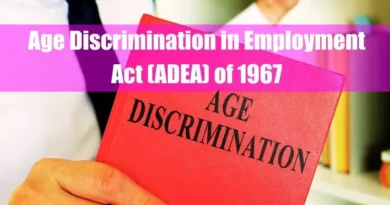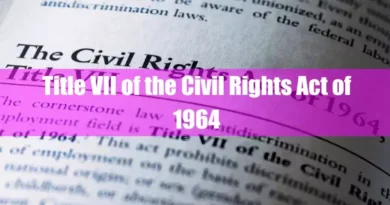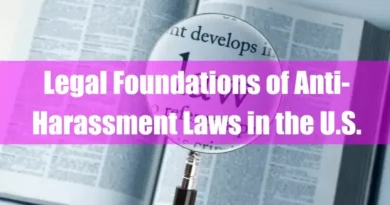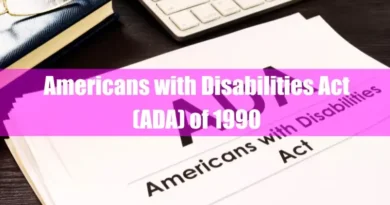The Equal Pay Act of 1963: A Comprehensive Guide
Takeaways
| Key Points |
|---|
| The Equal Pay Act of 1963 prohibits employers from paying employees of one sex less than those of the opposite sex for equal work, where “equal work” is defined by jobs requiring equal skill, effort, and responsibility under similar conditions. |
| It applies to all forms of compensation, including salary, bonuses, overtime, benefits, and allowances, and requires employers to raise the pay of lower-paid employees to match that of higher-paid employees if a wage disparity is found. |
| The Act also defines “equal work” based on the factors of skill, effort, and responsibility, ensuring that comparisons are made based on job requirements rather than individual employee qualifications. |
| However, the Act allows for wage differentials under certain exceptions, including seniority systems, merit-based systems, production-based pay, and other factors unrelated to gender, as long as the employer can prove the differential is bona fide. |
| The Act has been amended several times, notably in 1972 to cover more employees and in 2009 by the Lilly Ledbetter Fair Pay Act, which extended the statute of limitations for pay discrimination claims. |
Introduction to the Equal Pay Act of 1963
Overview and Historical Context
The Equal Pay Act of 1963 (EPA) is a significant U.S. labor law that makes wage disparity illegal based on sex. Enacted on June 10, 1963, as an amendment to the Fair Labor Standards Act (FLSA) of 1938, it marked a pivotal moment in the movement toward gender equality in the workplace.
Before the passage of the EPA, women were often paid less than men for performing the same job, reflecting societal attitudes of the time that undervalued women’s work.
The need for such legislation was highlighted by statistics showing that women earned only about 60% of what their male counterparts made for similar roles.
The historical backdrop to the Equal Pay Act is rooted in the post-World War II era when women’s participation in the workforce significantly increased. Despite their contributions, women faced systemic discrimination, including lower wages and fewer opportunities for advancement.
The push for equal pay gained momentum during the 1960s, paralleling the broader civil rights movement. Organizations like the National Organization for Women (NOW) and various labor unions were crucial in advocating for pay equity legislation.

Key Objectives and Significance of the Act
The primary objective of the Equal Pay Act of 1963 is to eliminate gender-based wage discrimination by ensuring that men and women receive equal pay for equal work. The Act specifically targets wage differentials between male and female employees performing jobs that require equal skill, effort, and responsibility under similar working conditions.
The significance of the EPA lies in its foundational role in establishing legal standards for pay equity in the United States. It was one of the first pieces of federal legislation to address gender discrimination, setting the stage for subsequent laws to protect workers’ rights.
The Act underscored that pay should be based on the job rather than the employee’s gender.
This concept continues to resonate in ongoing discussions about gender equality in the workplace.
Provisions of the Equal Pay Act
Main Requirements and Prohibitions
The Equal Pay Act prohibits employers from paying employees of one sex less than employees of the opposite sex for equal work. “Equal work” is defined by the Act as jobs that require equal skill, effort, and responsibility and are performed under similar working conditions.
This means an employer cannot pay a man more than a woman if they perform the same job with the same qualifications and conditions.
The Act applies to all forms of compensation, including salary, overtime pay, bonuses, stock options, profit sharing, life insurance, vacation and holiday pay, cleaning or gasoline allowances, hotel accommodations, reimbursement for travel expenses, and benefits.
Employers are also prohibited from reducing the wages of either sex to comply with the EPA, which means that if a wage disparity is found, the employer must raise the pay of the lower-paid employee(s) to match that of the higher-paid employee(s).
Definition of “Equal Work” Under the Act
Under the Equal Pay Act, “equal work” is evaluated based on three main factors: skill, effort, and responsibility.
- Skill: This refers to the experience, ability, education, and training required to perform the job. It is important to note that the comparison is based on the skills required for the job, not the skills of the individual employees.
- Effort: This involves the physical or mental exertion needed to perform the job. Jobs requiring substantially equal effort must involve tasks requiring the same physical or mental effort.
- Responsibility: This encompasses the degree of accountability required to perform the job. It considers the duties involved, including supervising other employees, managing budgets, or handling confidential information.
Exceptions and Allowable Wage Differentials
The Equal Pay Act allows for wage differentials in certain circumstances. These exceptions include:
- Seniority System: A pay system based on the time an employee has worked for an employer. Under a seniority system, longer-serving employees may be paid more than those with less tenure, regardless of gender.
- Merit System: A system that rewards employees based on their performance. If a company has an established merit system applied consistently and objectively, it may justify pay differences.
- System Measuring Earnings by Quantity or Quality of Production: Employees may be paid based on the number of units they produce or the quality of their work, provided that the criteria are applied equally to all employees, regardless of gender.
- Any Factor Other Than Sex: This catch-all provision allows for differences in pay due to factors unrelated to gender, such as education, experience, or geographic location. However, employers must be able to demonstrate that the factor is bona fide and not a pretext for gender discrimination.

Legislative History and Amendments
Origin and Passage of the Act
The Equal Pay Act of 1963 was introduced by Representative Edith Green, a Democrat from Oregon, and signed into law by President John F. Kennedy as part of his New Frontier Program. The Act was one of the first federal laws aimed explicitly at gender discrimination and was seen as a step forward in the fight for gender equality. However, it was met with resistance from various business groups and employers who feared the financial implications of equal pay.
Despite opposition, the Act was passed with broad bipartisan support in Congress.
Amendments and Changes Over the Years
Since its inception, the Equal Pay Act has undergone several amendments to strengthen its provisions and expand its scope. One notable amendment came with the Educational Amendments of 1972, which extended the protections of the EPA to cover executive, administrative, and professional employees, including teachers.
This amendment ensured that more workers were protected under the law, addressing gaps that had previously excluded a significant portion of the workforce.
In 2009, the Lilly Ledbetter Fair Pay Act was enacted, further modifying the EPA by changing the statute of limitations for filing a pay discrimination claim. Under this Act, the 180-day statute of limitations resets with each discriminatory paycheck, making it easier for employees to challenge ongoing pay discrimination.
Comparison with Related Laws
Differences Between the Equal Pay Act and Title VII of the Civil Rights Act of 1964
While both the Equal Pay Act and Title VII of the Civil Rights Act of 1964 address discrimination in the workplace, there are key differences between the two. “The EPA specifically focuses on wage discrimination based on sex for equal work performed under similar conditions. Title VII, on the other hand, is broader in scope, prohibiting employment discrimination based on race, color, religion, sex, or national origin.”
Moreover, the EPA does not require proof of discriminatory intent; a plaintiff only needs to demonstrate that a wage disparity exists between men and women performing substantially equal work. In contrast, Title VII claims require proof of discriminatory intent, which can be more challenging to establish.
Other Relevant Employment Discrimination Laws
Other laws complement the EPA in protecting against employment discrimination.
“These include the Pregnancy Discrimination Act of 1978, which prohibits discrimination based on pregnancy, childbirth, or related medical conditions, and the Americans with Disabilities Act of 1990, which prohibits discrimination against individuals with disabilities. Additionally, the Age Discrimination in Employment Act of 1967 protects employees 40 years of age and older from discrimination based on age.”
Together, these laws provide a comprehensive framework for addressing various forms of workplace discrimination.

Enforcement of the Equal Pay Act
Role of the Equal Employment Opportunity Commission (EEOC)
The Equal Employment Opportunity Commission (EEOC) is the federal agency responsible for enforcing the Equal Pay Act. The EEOC investigates claims of wage discrimination and can bring lawsuits against employers found to be violating the law.
It also guides employers on how to comply with the EPA and other anti-discrimination laws.
Steps for Filing a Claim Under the EPA
To file a claim under the Equal Pay Act, an employee must first contact the EEOC, which will conduct an investigation to determine if there is reasonable cause to believe that discrimination has occurred. If the EEOC finds a violation has occurred, it will attempt to resolve the matter through conciliation. If conciliation fails, the EEOC may file a lawsuit on behalf of the employee. Employees also have the right to file a lawsuit directly in federal Court without going through the EEOC, provided they do so within the required time limits.
Legal Remedies and Penalties for Violations
Violations of the Equal Pay Act can result in significant legal consequences for employers. Remedies available under the EPA include back pay for lost wages, liquidated damages equal to the amount of back pay (essentially doubling the compensation owed), and attorney’s fees. In some cases, the Court may also order reinstatement or promotion of the affected employee.
The EPA’s provisions are designed to make employees whole and deter employers from engaging in wage discrimination.
Impact and Effectiveness of the Act
Analysis of the Act’s Effectiveness in Closing the Gender Wage Gap
The Equal Pay Act of 1963 was a significant step forward in addressing wage discrimination based on gender. However, its effectiveness in closing the gender wage gap has been a topic of ongoing debate. While the Act provided a legal framework for challenging wage disparities, it has not completely eradicated the issue.
According to recent data, women, on average, still earn approximately 16% less than men, although the gap has narrowed since the Act’s passage. For example, in 2023, women still earn approximately 83.6 cents for every dollar earned by men, a modest improvement from the early 1960s when women earned about 60 cents on the dollar.
Several factors contribute to the persistent wage gap, including occupational segregation, differences in work experience, and the undervaluation of jobs traditionally held by women. While the Equal Pay Act prohibits direct wage discrimination, it does not address these structural issues, which continue to affect pay equity.

Case Studies and Landmark Court Decisions
Several landmark court cases have shaped the interpretation and enforcement of the Equal Pay Act. One notable case is Corning Glass Works v. Brennan (1974), in which the Supreme Court ruled that paying different wages to male and female employees based on the gender of the person traditionally holding the job violated the EPA. The Court’s decision emphasized that employers cannot justify pay differences based on historical gender roles or assumptions about the value of “men’s” versus “women’s” work.
Another important case, Ledbetter v. Goodyear Tire & Rubber Co. (2007), involved a female employee who discovered she was paid less than her male counterparts for the same work over many years. Although the Supreme Court initially ruled against her, stating she had not filed her claim within the required time frame, the case led to the passage of the Lilly Ledbetter Fair Pay Act of 2009. This Act revised the statute of limitations for filing pay discrimination claims, allowing it to reset with each discriminatory paycheck, making it easier for employees to seek justice.
Ongoing Challenges and Criticisms
Despite its importance, the Equal Pay Act faces several criticisms and challenges. One major issue is the burden of proof placed on employees. “To successfully claim wage discrimination under the EPA, an employee must demonstrate that they performed “equal work” to that of a higher-paid employee of the opposite sex.”
This can be difficult, especially when job duties are not identical or when employers justify pay differences based on factors other than sex. Additionally, the Act does not explicitly address pay disparities that arise from systemic discrimination, such as the concentration of women in lower-paying industries or the “motherhood penalty,” where women experience pay reductions after having children. Critics argue that more comprehensive legislation is needed to tackle these broader issues and achieve true pay equity.
Recent Developments and Future Outlook
Recent Changes and Proposed Legislation
In recent years, efforts have been made to strengthen the Equal Pay Act and address its limitations. One such effort is the proposed Paycheck Fairness Act, which aims to close loopholes in the EPA by increasing transparency around pay and enhancing penalties for employers who violate the law.
The Act also protects employees from retaliation for discussing their wages and requires employers to prove that wage differentials are based on factors other than sex that are job-related and necessary for business.
While the Paycheck Fairness Act has garnered significant support from gender equality advocates, it has faced opposition and has yet to be passed into law.
Proponents argue that the legislation is essential to closing the persistent gender wage gap and ensuring fair treatment for all workers.
The Future of Gender Pay Equity in the Workplace
Looking forward, the future of gender pay equity in the workplace will likely depend on legislative action, cultural shifts, and employer practices. There is growing recognition that achieving pay equity requires addressing not only direct wage discrimination but also the broader structural issues contributing to the wage gap.
Employers can play a crucial role in promoting pay equity by conducting regular pay audits, implementing transparent compensation practices, and fostering a culture of inclusivity and fairness.
Meanwhile, continued advocacy and awareness-raising are essential to ensuring that gender pay equity remains a priority on the national agenda.

Conclusion
The Equal Pay Act of 1963 was a groundbreaking law that laid the foundation for gender pay equity in the United States.
While significant progress has been made since its enactment, the journey toward true pay equity is ongoing.
Addressing the persistent gender wage gap requires a multifaceted approach that includes stronger legal protections, cultural change, and proactive measures by employers.
As the conversation around gender equality continues to evolve, the principles enshrined in the EPA remain as relevant as ever, reminding us of the importance of fairness and equality in the workplace.
FAQ
How does the Equal Pay Act define “establishment”?
An “establishment” refers to a distinct physical place of business. Under the Equal Pay Act, comparisons are typically limited to employees working at the same location, meaning pay equity evaluations are confined to individuals within the same physical workplace.
Are pay differences allowed under the Equal Pay Act?
Yes, the Act permits pay disparities if they’re based on seniority, merit, quantity or quality of production, or any factor other than sex. These exceptions must be bona fide and not a pretext for gender-based discrimination.
Does the Equal Pay Act cover all employers?
The Act applies to employers engaged in commerce or in producing goods for commerce. However, certain small businesses might be exempt, depending on specific criteria related to the Fair Labor Standards Act.
How does the Equal Pay Act interact with state laws?
While the Equal Pay Act sets a federal standard, many states have their own equal pay laws. If a state’s law provides greater protection against wage discrimination, employers in that state must adhere to the stricter standard.
What is the statute of limitations for filing a claim under the Equal Pay Act?
An individual must file a claim within two years of the alleged unlawful compensation practice or within three years if the violation is willful. Each discriminatory paycheck resets the statute of limitations.
Can an employer reduce wages to comply with the Equal Pay Act?
No, employers cannot lower the wages of either sex to equalize pay. If a disparity exists, the employer must raise the lower wage to comply with the law.
Are jobs with different titles but similar duties covered under the Equal Pay Act?
Yes, the Act focuses on job content rather than titles. If two positions require substantially equal skill, effort, and responsibility and are performed under similar conditions, they are subject to the Act’s provisions, regardless of differing titles.
Does the Equal Pay Act address pay disparities based on race or ethnicity?
No, the Act specifically targets sex-based wage discrimination. However, Title VII of the Civil Rights Act of 1964 prohibits employment discrimination based on race, color, religion, sex, or national origin, covering a broader range of discriminatory practices.
How does the Equal Pay Act affect employee benefits?
The Act covers all forms of compensation, including benefits. Employers must provide equal benefits packages to employees of both sexes when performing equal work, ensuring parity in areas like health insurance, retirement plans, and bonuses.
What role does the Equal Employment Opportunity Commission (EEOC) play in enforcing the Equal Pay Act?
The EEOC enforces the Equal Pay Act, investigating complaints, facilitating settlements, and, if necessary, filing lawsuits on behalf of employees to address wage discrimination based on sex.
Citation
The Equal Pay Act of 1963. (n.d.). US EEOC. https://www.eeoc.gov/statutes/equal-pay-act-1963









